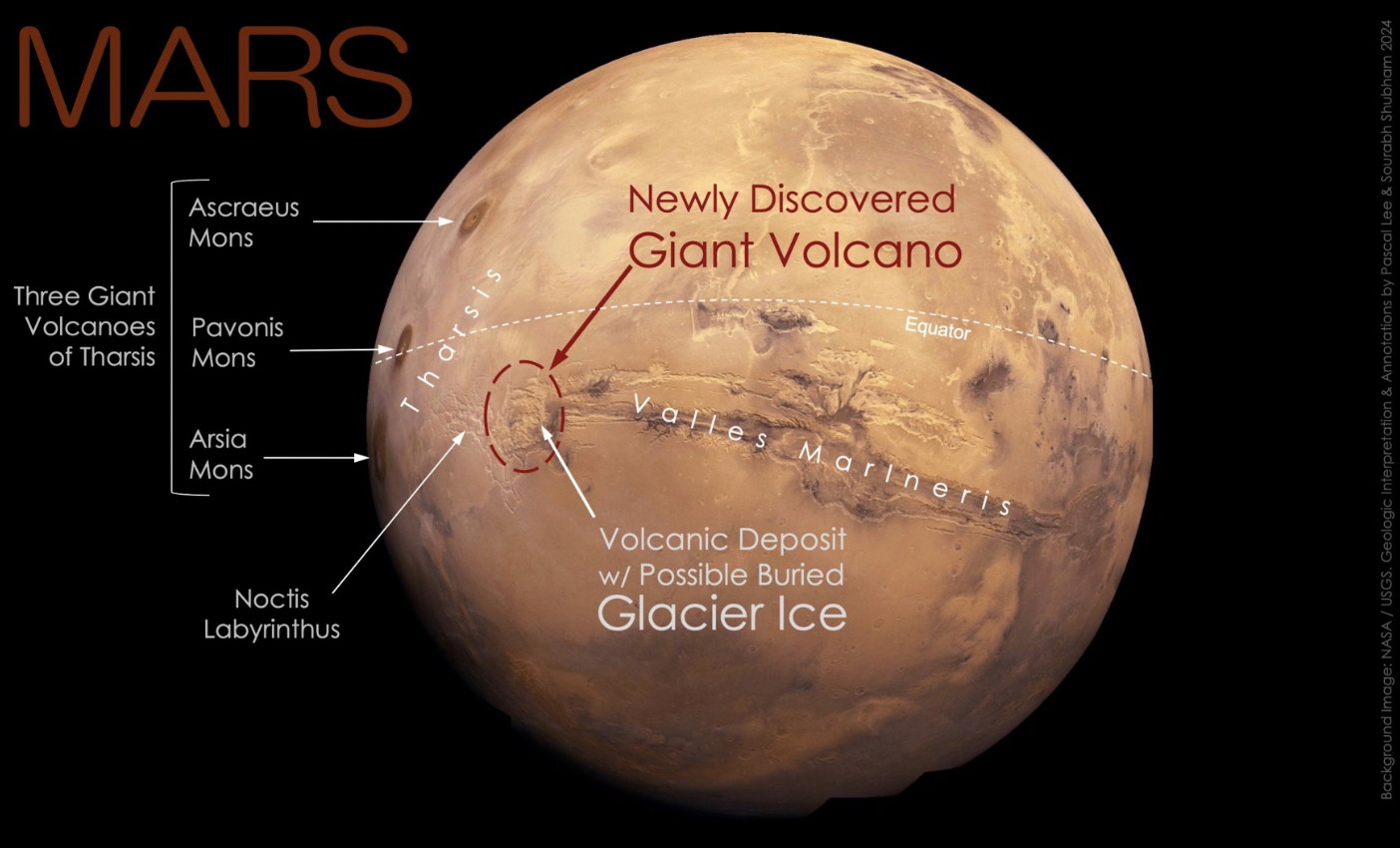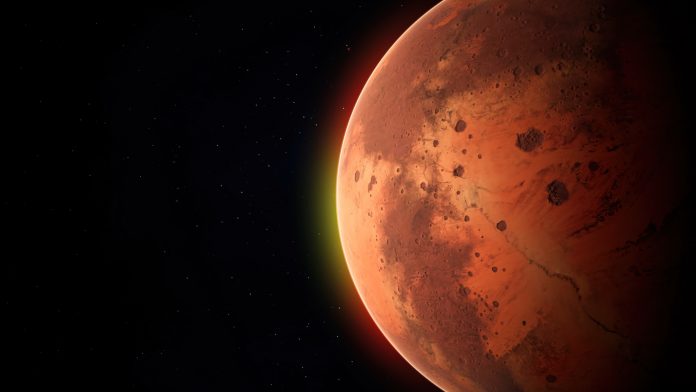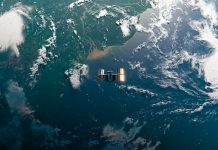A colossal volcano known as the “Noctis volcano” and a potentially buried glacier ice sheet in Mars’ Tharsis volcanic province has been unveiled near the equator of the red planet
At the 55th Lunar and Planetary Science Conference, the volcano known as the “Noctis volcano” has been camouflaged by erosion over the years, escaping detection despite being imaged repeatedly by orbiting spacecraft since 1971.

Living in the enigmatic region
Standing tall at an elevation of +9022 meters and stretching 450 kilometres in width, this volcano has been active for aeons, shaping Mars’ geological landscape.
The discovery, led by Dr. Pascal Lee of the SETI Institute and the Mars Institute, looks at the enigmatic region where the Noctis volcano lives among the intricate landscape of Noctis Labyrinthus and Valles Marineris.
Various geological features confirm its volcanic origins, including elevated mesas, caldera remnants, lava flows, and pyroclastic deposits.
Within the southeastern sector of the volcano lies a thin layer of recent volcanic material, beneath which scientists suspect glacier ice might still linger.
Understanding the geological evolution of Mars
This finding opens doors to understanding Mars’ geological evolution and presents a promising site for future exploration.
Researchers also uncovered an extensive area of volcanic deposits within the volcano’s perimeter, featuring peculiar blister-like mounds known as “rootless cones.”
These formations suggest past explosive steam venting or swelling, possibly interacting with water or ice-rich surfaces.
The study builds upon previous observations of a remaining glacier discovered just a year ago within the same volcanic blanket. The sulfate salts and polyhydrated sulfates indicate a buried glacier ice sheet beneath the blistered volcanic terrain.
The Noctis volcano’s history reveals a complex interaction of volcanic activity, fracturing, thermal erosion, and glaciation. It is a testament to Mars’ dynamic geological past, offering compelling clues about its climatic conditions and potential habitability.
Noctis volcano
Despite much information being collected from this discovery, many mysteries surround the Noctis volcano. Questions about its exact age, ongoing volcanic activity, and the possibility of hosting life remain uncertain.
The accessibility of glacier ice near the equator could revolutionise Mars exploration, offering a vital resource for sustaining human missions. With advancements in technology and a lot of data from missions like NASA’s Mariner 9 and Mars Reconnaissance Orbiter, scientists are set to unlock more secrets of the red planet.











